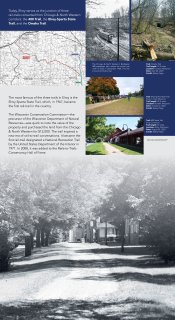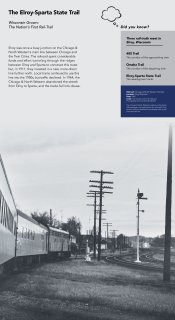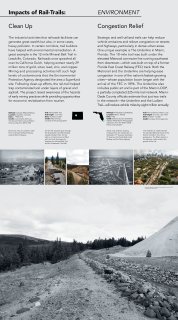
Rail-trails are built on the corridors and legacies of railroads
-
-
Talkback:
Does your community have any trails?
Are they rail-trails?
A few early rail-trails emerged in the 1960s and 1970s, and then in 1980, Congress deregulated the rail industry. Deregulation made it easier for railroads to discontinue service on marginal routes. They abandoned as many as 4,000 to 8,000 miles each year throughout the next decade.
The spike in abandonments raised public concern over the potential permanent loss of thousands of miles of rail corridors. In 1983, Congress amended the National Trails System Act to create “railbanking.” This voluntary agreement preserves inactive rail corridors for future use by temporarily converting them to trails.
This legislation opened possibilities for thousands of miles of defunct trackage to become rail-trails. Today, there are over 2,000 rails-to-trails projects across the nation, covering more than 24,000 miles.
---
---
Opposing views
While many rail enthusiasts and other members of the public lament the closure of railroads, some trail conversion projects have sparked heated debates. The overall success of rail-trails has sometimes led organizers to consider active railroads as possibilities for new trails.
That raises a big question: what is the best use of an urban rail corridor? A single freight car carries the equivalent of two-and-a-half semi-trucks. A successful trail can attract thousands of daily cyclists and pedestrians. The strong views on both sides of these debates are evidence of the ongoing value of railroad spaces.
-
-
May Theilgaard Watts
In 1963, May Theilgaard Watts wrote a letter to the editor of the Chicago Tribune to encourage the construction of a public path on the abandoned route of the Chicago, Aurora & Elgin Railroad. She aspired to preserve the path for natural beauty and non-motorized, low-impact use. A grassroots campaign led by community members completed the Illinois Prairie Path by acquiring permission from landowners and physically cleaning up and building the trail. Watts received the National Trails Symposium award from the U.S. Department of the Interior in 1971 for her advocacy.
-
-
Captions:
Above: Isabel Wasson, May Theilgaard Watts
Panel: Elroy-Sparta State Trail, Tunnel 3 (detail), October 2, 2022. Photograph by Hailey Paige




